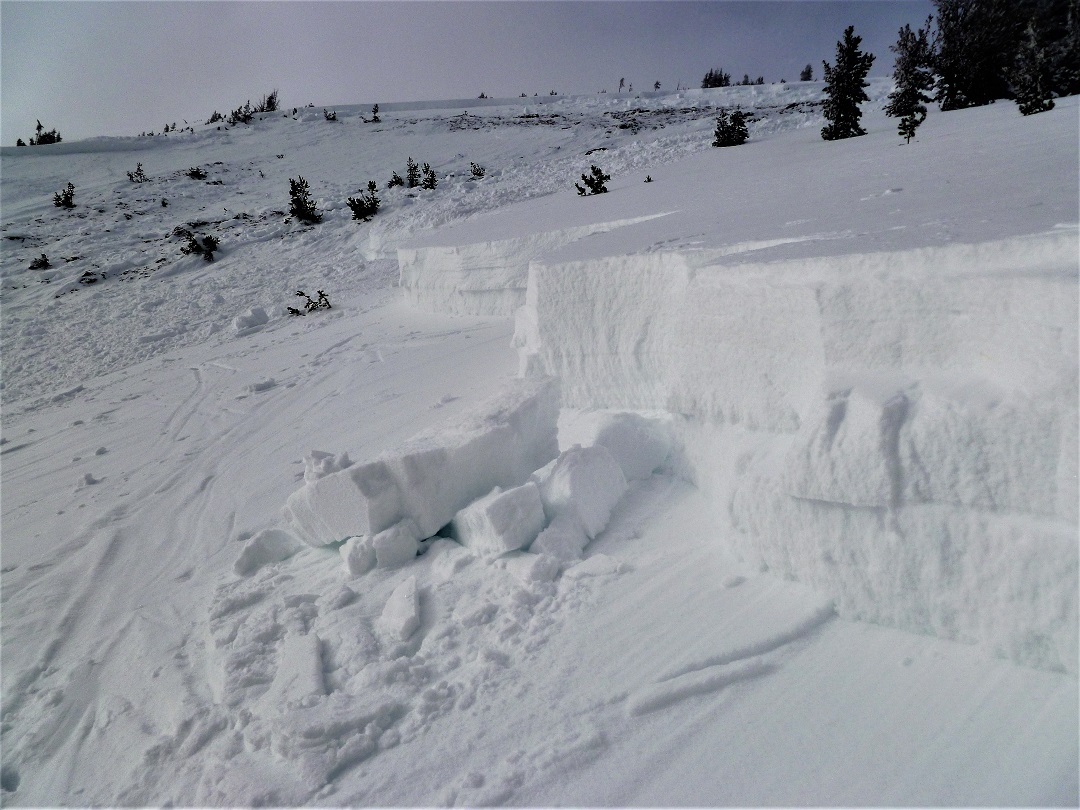By Eric Knoff EBS Contributor
When skiing or riding in the backcountry, recognizing signs of instability plays an important role in assessing snow safety. Cracking and collapsing of the snowpack, along with recent avalanche activity, are Mother Nature’s clues that the snowpack is unstable.
Paying attention to clues of instability, and knowing how to react to them, is a sizeable advantage in staying safe while traveling in the backcountry.
The first and most obvious sign of snow instability is recent avalanche activity. This important clue is full confirmation that unstable snow exists, and that more avalanches are probable. It is crucial that the aspect and elevation of recently avalanched slopes are noted, and that slopes with similar orientation are avoided. Riding next to existing avalanches is just bad judgment, and is asking for trouble.
In addition, when notable signs of instability are present, all slopes steep enough to avalanche should be viewed as if they will slide and be avoided if possible.

At times, fresh avalanche activity is easy to identify by large debris piles and defined crowns. Other times, recent avalanche activity may not always be noticeable. Fresh or windblown snow may cover crowns—the area where the avalanche released—and debris and poor visibility, due to fog or falling snow, can make it difficult to see or assess the extent of avalanche activity.
In these situations a keen eye, heightened awareness of weather and terrain, and having some avalanche education are all important factors when deciding where to ski or ride your snowmobile.
If recent avalanche activity is not visible, other signs of instability can still be present. Shooting cracks and collapsing of the snowpack are two obvious indications of snow instability. These symptoms are most often accompanied by a loud “whoompfing” sound, and a physical settlement of the snowpack may be felt. If you are near or on a slope when this happens, it is best to get off the slope quickly.
Slopes collapse and crack due to the failure of a weak layer within the snowpack. Weak layers form in many different ways, but all pose the same problem. They will collapse and fail when too much weight (i.e., you and your skis or snowmobile) is added to the snowpack and the resulting stress overrides its strength. This can produce an avalanche if the slope is steep enough to slide.

It is important to communicate your observations of instability to all of your group’s members, and make a solid game plan to stay out of harm’s way.
Finally, a safe and easy way to gather information about instability in the backcountry is to read the local avalanche forecast for an up-to-date report on conditions before venturing into the mountains.
Keep in mind that forecast centers love to hear your frontline backcountry observations, especially about indications of volatility in the snowpack. Recognizing and understanding signs of instability, and communicating with others about them, are tools that will help ensure you and your group have many more days of safe skiing and riding in the mountains.
Eric Knoff is an avalanche forecaster for the Gallatin National Forest Avalanche Center. He’s been a public forecaster the past eight winters, and also spent four seasons as an avalanche forecaster for the Going-to-the-Sun Road plowing operation in Glacier National Park.
Visit mtavalanche.com to view the daily avalanche advisory for southwest Montana and send your snowpack observations to mtavalanche@gmail.com.














